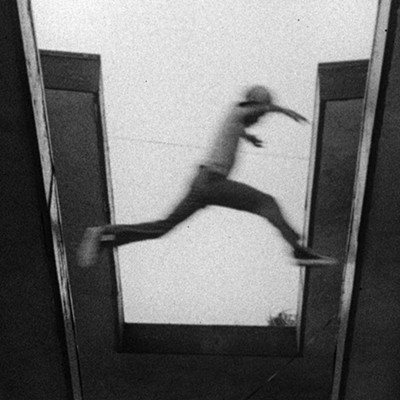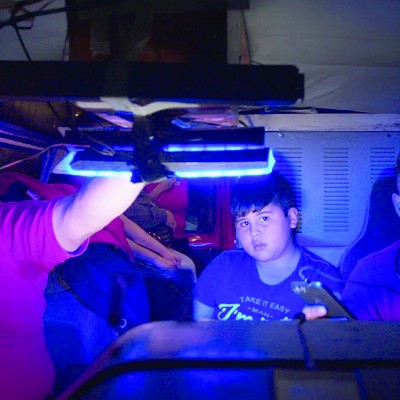Several themes, in fact, do run through this year's event. First of all--and this may be more interesting to filmmakers than moviegoers--we're dealing with the Reel Frontier film and video competition, which screens 15 feature and 52 short films and videos from 10 countries. And those are just the finalists. Seventeen will receive their world premieres during the festival, and 45 will enjoy their first screenings in Arizona.
Eighteen of the works shown during the festival, by the way, were filmed in Arizona or directed by Arizona natives. That's about all they have in common; one is a horror story, one is an autobiographical piece about a teen-age massage parlor worker, another is a Japanese documentary shot in Phoenix--you get the idea.
Far more focused are the series showcasing work about or, in most cases, by people ethnically distinct from the nice white folks who attend film festivals.
Cine Chicano, programmed by Ruben Reyes, is back this year with eight documentaries and narratives by Chicano filmmakers. The most promising item is La Balada del Soldado, a 57-minute tragicomedy about a young man preparing to leave his barrio and his family to forge his own identity as a soldier in Vietnam.
Looking beyond this country's Mexican-American population is Cine Latino, a sextet from south of the border and from South Americans living in the USA. Included are a program of Mexican animation tapping into folklore and mythology, a journey through the Andes, a documentary searching for jazz connections in Cuba and a portrait of Mexico City street kids.
There will also be a quartet of Native American shorts, plus a dozen items--half of them revolving around Australia's Aborigines--gathered under the title Indigenous Cinema.
The experimental category is dominated by James Benning's California Trilogy, 90-minute meditations on three different areas of the monster state to our west, and work by the strange and challenging James Fotopoulos, principally his Christabel, inspired by the Coleridge tale of vampire seduction. Of special interest will be film scholar Scott MacDonald's presentation of material premiered by New York's 1950s film society Cinema 16, most of it intended to shock and provoke.
Perhaps the most valuable aspect of a festival like this is its showcase of shorts, which almost never get into mainstream theaters and don't fit easily into the inventories of video stores, assuming the little films even make it to video.
These are not guaranteed miniature masterpieces by any means. Annette Solakoglu's Border, for instance, seems little more than a seven-minute celluloid calling card demonstrating Solakoglu's professionalism and basic craftsmanship. An old man trudges along a dusty road, followed by a goose, and argues with a border guard while the goose waddles easily across the frontier to the tune of John Lennon's "Imagine."
Even simpler is Jinoh Park's six-minute Lunch, in which an old homeless woman moves slowly to a trash can, removes something from it, hobbles to a bench, sits down and eats a remarkably clean-looking bit of pasta. This stark short will impress some people as visual haiku commenting on the inherent dignity of people in the worst circumstances; it will bore others as a dully paced, unimaginatively shot student project (Park is a grad student at NYU).
Likely to stir even deeper discussion is Chel White's Passage, contrasting colorized stock footage of space flight and war with shots of fully dressed people floating placidly underwater, all to the tune "Neptune" from Holst's The Planets. Haunting and disturbing, this may have something to do with innocence and corruption, or birth and death, or it may be totally meaningless.
Two shorts with great surface appeal are Brin Hill's Morning Breath and Mike Saenz' Casablanca. Morning Breath is essentially a long music video, except that instead of music the soundtrack is a poem about Brooklyn love and street credibility by a New York City spoken-word artist called muMs. Casablanca is literally the stuff dreams are made of. It's an anxiety dream about performance (Nadine is supposed to give a violin recital but doesn't know how to play, and anyway she has to cook dinner) and competition (a beautiful interloper is stealing Nadine's friends). Artless and guileless, Casablanca is probably the most "realistic" dream sequence since the one in John Cassavettes' Lovestreams.
For a complete schedule, check out www.azfilmfest.com.











